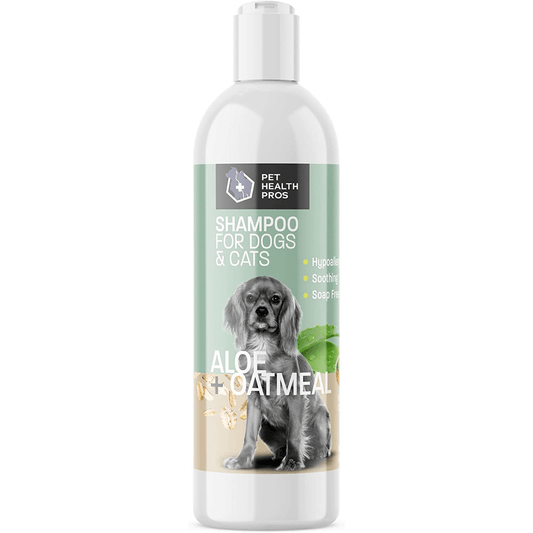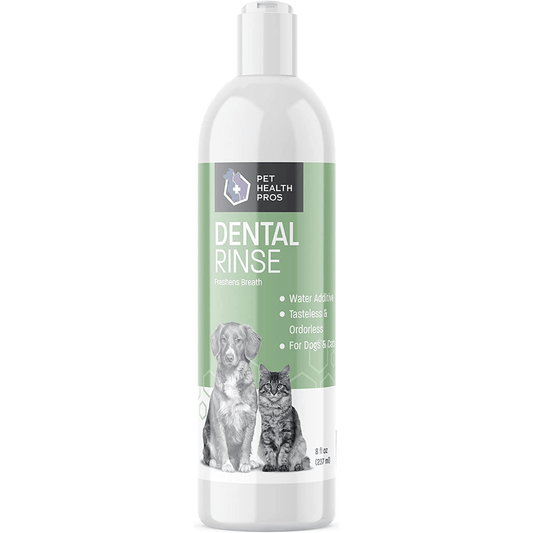Prednisone is a common medication used for dogs, often prescribed to treat various health issues. Understanding how it works, the right dosages, and potential side effects is crucial for pet owners. This article aims to shed light on prednisone for dogs, helping you make informed decisions about your furry friend's health.
Key Takeaways
- Prednisone is a corticosteroid that helps reduce inflammation and suppress the immune system in dogs.
- Dosage varies based on the dog's weight, condition, and response to treatment; always follow your vet's advice.
- Common side effects include increased thirst and urination, while serious side effects may arise with long-term use.
- Alternatives to prednisone include other medications and natural remedies; consult your vet for options.
- Regular monitoring and check-ups are important to ensure your dog's health while on prednisone.
Overview Of Prednisone For Dogs
What Is Prednisone?
Prednisone is a synthetic corticosteroid medication often prescribed by veterinarians for dogs. It's essentially a manufactured version of cortisol, a hormone naturally produced by the adrenal glands. Prednisone acts as an anti-inflammatory and immunosuppressant, making it useful for treating a wide range of conditions. It's important to remember that prednisone doesn't cure diseases; instead, it manages symptoms and improves the dog's quality of life.
How Does Prednisone Work?
Prednisone works by reducing inflammation and suppressing the immune system. When a dog's body experiences inflammation (due to allergies, arthritis, or other conditions), prednisone interferes with the inflammatory process. It does this by blocking the production of substances that cause inflammation. Similarly, in cases of autoimmune diseases, where the immune system attacks the body's own tissues, prednisone helps to calm down the immune response. It's a bit like hitting the pause button on the body's defense mechanisms.
Common Conditions Treated With Prednisone
Prednisone is used to treat a variety of conditions in dogs. Here are some of the most common:
- Allergies: Prednisone can provide relief from itching, skin irritation, and other allergy symptoms.
- Arthritis: It helps reduce inflammation and pain in the joints, improving mobility.
- Autoimmune Diseases: Conditions like lupus and immune-mediated hemolytic anemia (IMHA) can be managed with prednisone.
- Inflammatory Bowel Disease (IBD): Prednisone can help reduce inflammation in the digestive tract.
- Addison's Disease: This condition involves the adrenal glands not producing enough cortisol, and prednisone can be used as a replacement.
It's important to note that while prednisone can be very effective, it's not a long-term solution for many of these conditions. Veterinarians often use it to manage acute flare-ups or as part of a broader treatment plan.
Dosage Guidelines For Prednisone
Determining The Right Dosage
Okay, so figuring out the right prednisone dosage for your dog? It's not a one-size-fits-all kind of thing. Your vet is going to be your best friend here. They'll consider a bunch of stuff, like what's going on with your dog, how bad it is, and your dog's size. Don't even think about playing doctor and changing the dose yourself. Seriously, that's a recipe for trouble. Prednisone is strong, and getting the dosage wrong can lead to some nasty side effects. Listen to your vet, people!
Factors Influencing Dosage
So, what exactly does your vet look at when deciding on the right dose? Well, a few things:
- Weight of your dog: Bigger dogs usually need more, but it's not always that simple.
- The specific condition being treated: Allergies might need a lower dose than, say, an autoimmune disease.
- Severity of the condition: A mild skin issue won't need as much prednisone as a severe inflammatory problem.
- Other medications your dog is on: Some drugs can interact with prednisone, so your vet needs the full picture.
It's a bit of a balancing act, and your vet will carefully weigh all these factors to find the sweet spot where the prednisone is effective without causing too many problems. If your dog has dog allergies, the dosage might be different than if they have arthritis.
Administering Prednisone Safely
Alright, you've got the prescription, now what? Here's the deal:
- Follow the vet's instructions exactly. Don't skip doses, don't double up, just do what they say.
- Give prednisone with food. This can help prevent stomach upset. Nobody wants a dog with an upset stomach.
- Keep an eye on your dog for any weird behavior or side effects. If you notice anything, call your vet.
- Never stop giving prednisone abruptly. This can be dangerous. Your vet will tell you how to gradually reduce the dose when it's time to stop.
It's super important to be consistent with giving prednisone. Set a reminder on your phone if you have to. Missing doses can mess with the medication's effectiveness and potentially cause problems. Think of it like this: you wouldn't skip doses of your own meds, right? Same goes for your furry friend.
Potential Side Effects Of Prednisone
Prednisone, while effective, can bring about a range of side effects in dogs. It's important to be aware of these so you can monitor your dog and know when to seek veterinary advice. Some side effects are more common and less serious, while others can be quite concerning.
Common Side Effects
These are the side effects you're most likely to see if your dog is on prednisone. They aren't always cause for alarm, but you should still keep your vet in the loop.
- Increased thirst and urination: You might notice your dog drinking a lot more water and needing to go outside more frequently. This is because prednisone affects the kidneys' ability to regulate water balance.
- Increased appetite: Your dog may seem hungrier than usual and might start begging for food more often. This is a common side effect of steroid medications.
- Panting: Prednisone can cause dogs to pant excessively, even when they aren't hot or exercising.
- Lethargy: While some dogs become hyperactive, others may become more tired and less interested in playing.
Serious Side Effects
These side effects are less common, but they require immediate veterinary attention. Don't wait if you notice any of these signs.
- Gastrointestinal issues: This includes vomiting, diarrhea, and black, tarry stools, which could indicate bleeding in the stomach or intestines.
- Development or worsening of diabetes: Prednisone can affect blood sugar levels and may trigger diabetes in predisposed dogs or worsen existing diabetes.
- Muscle weakness: You might notice your dog having difficulty getting up, walking, or climbing stairs. This is because prednisone can cause muscle wasting over time.
- Behavioral changes: Some dogs may become aggressive, anxious, or depressed while on prednisone. If you notice significant changes in your dog's personality, contact your vet.
It's important to remember that not all dogs experience side effects, and the severity can vary. Always discuss any concerns with your veterinarian. They can help you weigh the benefits of prednisone against the potential risks and adjust the dosage if necessary.
Managing Side Effects
Here are some ways to help manage the side effects of prednisone in dogs:
- Provide plenty of fresh water to combat increased thirst.
- Feed your dog smaller, more frequent meals to help with increased appetite. Avoid giving extra treats.
- Monitor your dog's weight and adjust their diet as needed to prevent excessive weight gain.
- Talk to your vet about potential medications or supplements to help protect the stomach and liver.
If you're concerned about the side effects of prednisone, you might want to explore alternatives to prednisone with your veterinarian.
Alternatives To Prednisone
Prednisone can be a helpful drug for dogs, but it's not always the best or only option. Sometimes, the side effects are too much to handle, or maybe you're looking for something that might be a better fit for your dog's specific condition. Luckily, there are other avenues to explore with your vet.
Other Medications For Dogs
Depending on what your dog is being treated for, there might be other medications that could work. For allergies, antihistamines or allergy shots could be an option. For pain and inflammation, non-steroidal anti-inflammatory drugs (NSAIDs) are often used. It's important to talk to your vet about the pros and cons of each medication, as they all have potential side effects.
Natural Remedies
Some people explore natural remedies as alternatives or supplements to traditional medications. Things like omega-3 fatty acids can help with inflammation, and certain herbs are thought to have pain-relieving properties. However, it's super important to remember that "natural" doesn't always mean "safe." Always talk to your vet before giving your dog any new supplement or herbal remedy, as some can interact with other medications or have their own side effects. For example, arthritis remedies can be explored to help manage joint pain and inflammation.
When To Consider Alternatives
You might want to think about alternatives to prednisone if your dog is experiencing severe side effects, if the prednisone isn't effectively managing their condition, or if you're concerned about the long-term risks of using steroids. It's also worth exploring other options if your dog has certain health conditions that make prednisone a less suitable choice.
Here are some situations where alternatives might be worth considering:
- Unmanageable Side Effects: If your dog is constantly panting, excessively thirsty, or developing other concerning side effects.
- Lack of Improvement: If prednisone isn't helping to alleviate your dog's symptoms.
- Long-Term Use Concerns: If your vet anticipates your dog needing prednisone for an extended period.
Ultimately, the decision to switch to an alternative should be made in consultation with your veterinarian, who can help you weigh the risks and benefits of each option and determine the best course of treatment for your dog.
Monitoring Your Dog On Prednisone
It's super important to keep a close eye on your dog while they're taking prednisone. Regular monitoring can help catch any potential problems early and make sure the medication is actually helping them.
Signs Of Improvement
Seeing your dog get better is the whole point, right? Here's what you might notice when prednisone is working:
- Increased energy levels – they might be more playful and active.
- Improved appetite – if they were eating poorly, they might start eating more.
- Reduced inflammation – swelling or redness might go down.
- Decreased itching – if they were scratching a lot, that might lessen.
When To Contact Your Veterinarian
Even if you see improvements, it's important to know when something isn't right. Don't hesitate to call your vet if you notice any of these:
- Excessive thirst or urination – this is a common side effect, but it can become a problem.
- Changes in behavior – like increased aggression or depression.
- Vomiting or diarrhea – could indicate a more serious issue.
- Black, tarry stools – this could be a sign of internal bleeding.
- Difficulty breathing – always an emergency.
It's always better to be safe than sorry. If you're unsure about something, a quick call to your vet can give you peace of mind and potentially prevent a bigger problem down the road.
Routine Check-Ups
Regular vet visits are key while your dog is on prednisone. These check-ups allow your vet to monitor their overall health and adjust the dosage if needed. They might do blood tests to check liver function, kidney function, and blood sugar levels. These tests help ensure that the prednisone isn't causing any long-term damage and that the dosage is still appropriate for your dog's condition. If you are concerned about human medication on dogs, consult with your vet.
Long-Term Use Of Prednisone
Prednisone can be a real lifesaver for dogs, but like many medications, it's not without its drawbacks, especially when used for a long time. It's important to understand the potential issues and how to manage them if your dog needs prednisone for an extended period. It's not something to take lightly, and close monitoring is key.
Risks Of Long-Term Use
Long-term prednisone use can lead to a range of side effects. These can vary in severity and can impact your dog's overall health. It's a balancing act between managing the condition and minimizing the drug's negative effects. Some of the common risks include:
- Increased risk of infections due to immune system suppression.
- Development or worsening of diabetes.
- Muscle weakness and loss.
- Skin issues, such as thinning skin and hair loss.
- Increased appetite and weight gain, potentially leading to obesity.
It's important to have regular check-ups with your vet to monitor your dog's health and catch any potential problems early. Blood tests and other diagnostics can help assess organ function and identify any adverse effects of the medication.
Adjusting Dosage Over Time
One of the key strategies for managing long-term prednisone use is to adjust the dosage over time. The goal is to find the lowest effective dose that controls the condition while minimizing side effects. This often involves a process of trial and error, working closely with your veterinarian. Here's what that might look like:
- Initial High Dose: To quickly control the condition.
- Gradual Reduction: Slowly lowering the dose as the dog improves.
- Maintenance Dose: The lowest dose that keeps the condition under control.
Weaning Off Prednisone
If possible, the ultimate goal is often to wean your dog off prednisone completely. This needs to be done very gradually, under the guidance of your vet. Suddenly stopping prednisone can be dangerous, as it can cause adrenal insufficiency. The adrenal glands may not be producing enough cortisol on their own, and a sudden withdrawal of prednisone can lead to a crisis. The weaning process typically involves:
- Very Slow Reduction: Decreasing the dose by small increments over weeks or months.
- Monitoring: Watching for any signs of the original condition returning.
- Adrenal Function Tests: Your vet may perform tests to assess how well your dog's adrenal glands are functioning.
If you're considering alternatives to prednisone, talk to your vet about the best approach for your dog's specific situation.
Using prednisone for a long time can lead to some serious side effects. It’s important to talk to your doctor about how to manage these risks. If you or someone you know is on prednisone, make sure to stay informed about its effects. For more helpful tips and information, visit our website today!
Final Thoughts on Prednisone for Dogs
In summary, prednisone can be a helpful medication for dogs dealing with various health issues. It’s important to follow your vet's advice on how much to give and for how long. Keep an eye out for any side effects, as they can vary from dog to dog. If you notice anything unusual, don’t hesitate to reach out to your vet. Remember, while prednisone can provide relief, it’s not a long-term solution for every condition. Always discuss with your vet about the best treatment plan for your furry friend.
Frequently Asked Questions
What is prednisone used for in dogs?
Prednisone is often used to treat dogs with allergies, inflammation, or autoimmune diseases. It helps reduce swelling and improve their overall comfort.
How is the dosage of prednisone determined for dogs?
The right dose of prednisone for your dog depends on their weight, the condition being treated, and how they respond to the medication. Always follow your vet's instructions.
What are the common side effects of prednisone in dogs?
Some common side effects include increased thirst and hunger, frequent urination, and changes in behavior. If you notice anything unusual, contact your vet.
Can prednisone be given long-term to dogs?
While prednisone can be effective for long-term use, it may lead to serious side effects. Your vet will monitor your dog closely and may adjust the dosage as needed.
Are there alternatives to prednisone for dogs?
Yes, there are other medications and natural remedies that can help manage your dog's condition. Discuss these options with your veterinarian to find the best choice.
How can I monitor my dog while they are on prednisone?
Keep an eye on your dog's behavior, appetite, and drinking habits. Regular vet check-ups are important to ensure the medication is working properly and to catch any side effects early.








